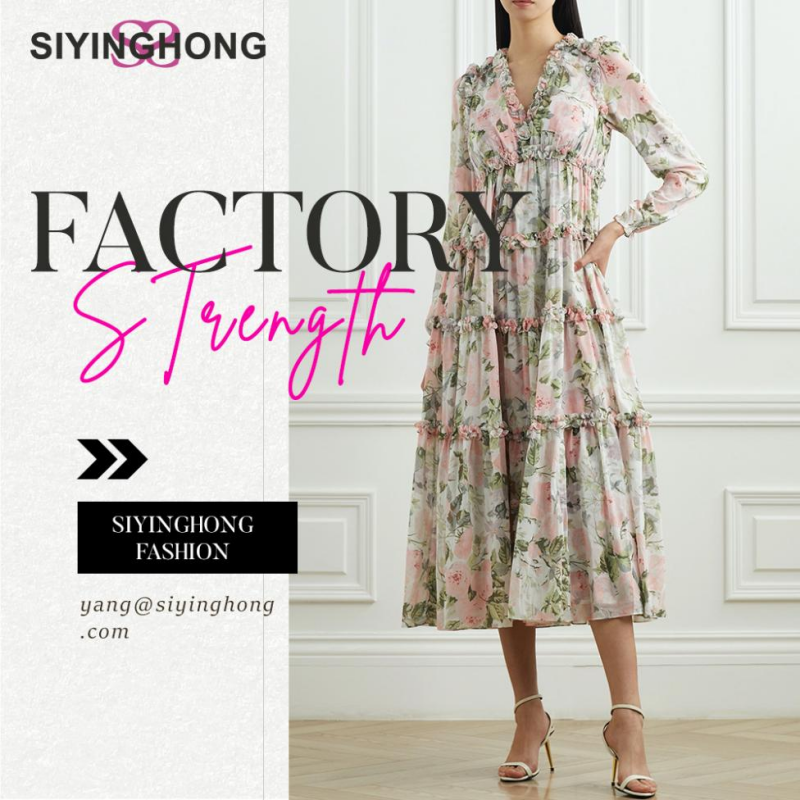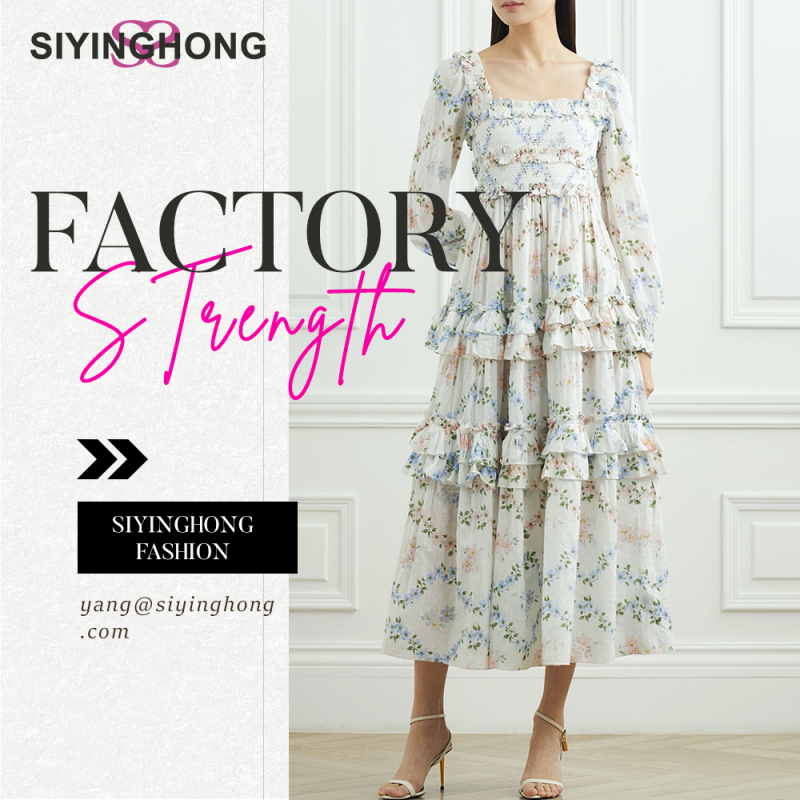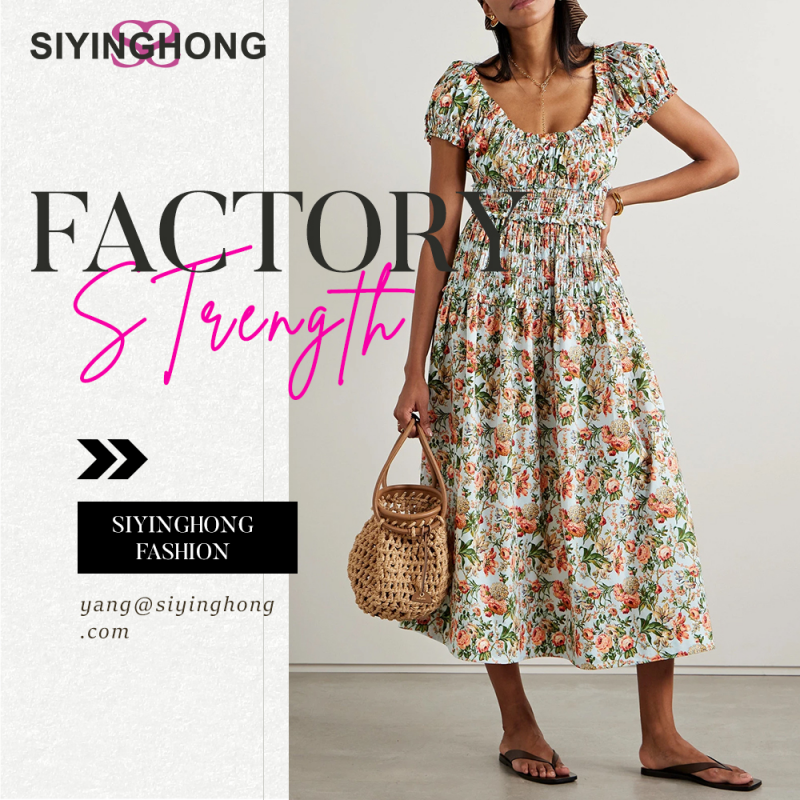Garment quality inspection can be divided into two categories: “internal quality” and “external quality” inspection

The internal quality inspection of a garment
1, the garment “internal quality inspection” refers to the garment: color fastness, PH value, formaldehyde, nitrogen, milk chewing degree, shrinkage rate, metal toxic substances.. And so on.
2. Many of the “internal quality” inspection can not be detected visually, so it is necessary to set up a special testing department and professional personnel equipment for testing. After passing the test, they will try to transmit to the company quality personnel with the “report” party!
The external quality inspection of clothing

Appearance inspection, dimension inspection, surface / auxiliary material inspection, process inspection, embroidery printing / washing water inspection, ironing inspection, packaging inspection.
1, appearance inspection: check the appearance of the garment: damage, obvious color difference, yarn, color yarn, broken yarn, stains, color, color… Quake point.
2, size inspection: can be measured according to the relevant documents and data, the clothes can be leveled, and then the measurement and verification of a part. The unit of measurement is “centimeter system” (CM), and many foreign enterprises use “inch system” (INCH). It depends on the requirements of each company and the guests.
3. Face / accessories inspection:
A, Fabric inspection: check whether there is A fabric, drawing yarn, broken yarn, yarn knot, color yarn, flying yarn, edge color difference, stains, cylinder difference…wait a minute.
B, accessories inspection: such as, zipper check: whether the up and down is smooth, whether the model is consistent, whether the zipper tail has rubber thorns. Four close button check: button color, size is in line with, up and down buckle is firm, loose, button edge is sharp. Car suture inspection: car line color, specification, whether fade. Hot drill check: hot drill is strong, size specifications.wait a minute….
4, process inspection: pay attention to the symmetrical part of the garment, collar, cuff, sleeve length, pocket, whether the symmetry. Collar: whether round and smooth, straight. Foot side: whether there is any uneven qi. Shang sleeve: Shang cuff eat potential dissolution is uniform. Front and middle zipper: whether the zipper seam is smooth and the zipper requirement is smooth. Foot mouth; whether symmetrical, consistent size.
5. Embroidery printing / washing water inspection: pay attention to the position, size, color, shape effect of embroidery printing. Laundry water to check: after washing water feel effect, color, not without rags.
6, ironing inspection: pay attention to the ironing clothes flat, beautiful, wrinkle yellow, water.
7, packaging inspection: the use of documents and data, check the external box mark, rubber bag, barcode sticker, listing, hanger, whether correct. Whether the packing quantity meets the requirements, and whether the code number is correct.(Sampling inspection shall be conducted according to the AQL 2.5 inspection standard.)

The content of clothing quality inspection
At present, the quality inspection done by garment enterprises is mostly the appearance quality inspection, mainly from the aspects of garment accessories, size, sewing, labeling. The inspection contents and inspection requirements are as follows:
1 Fabric, material
①, All kinds of clothing fabrics, materials, auxiliary materials are not fade after washing: texture (composition, feel, luster, fabric organization, etc.), patterns and embroidery (location, area) should be consistent with the requirements;
②, The fabric of all kinds of clothing products can not have the phenomenon of latitude slope;
③, All kinds of clothing finished products surface, inside, auxiliary materials can not have silk, damage, holes or affect the wearing effect of serious weaving residue (roving, lack of yarn, thread, etc.) and cloth edge pinhole;
④, The surface of the leather fabric can not affect the appearance of the pit, holes and scratches;
⑤, The knitting clothing can not have the surface of uneven phenomenon, and the surface of clothing can not have yarn joints;
⑥, All kinds of clothing surface, inside, accessories can not have oil stains, pen stains, rust stains, stains, color stains, watermark, offset printing, powder printing and other kinds of stains;
⑦. Color difference: A. No different shades of the same color on the same garment; B. No serious uneven staining on the same garment of the same garment (except for fabric design requirements); C. No obvious color difference between the same colors of the same clothing; D. The top and the matching bottom;
⑧, All washing, grinding and sandblasting fabrics should feel soft, correct color, symmetrical pattern, and no damage to the fabric (except for special design);
⑨, All the coated fabric should be evenly coated, firm, the surface can not have residues. The finished product can not have coating foaming and falling off after washing.
2 Dimensions
① The size of each part of the finished product conforms with the required specifications and dimensions, and the error should not exceed the tolerance range;
②, The measurement method of each part is strictly in accordance with the requirements.
3 The process
①. Adhesion:
A. All the lining parts should choose the lining suitable to the surface, lining material, color and shrinkage;
B, each adhesive lining part should be firmly and smooth, can not have glue, foaming phenomenon, can not cause fabric shrinkage.
②. Screw process:
A. The type and color test of the sewing line should be matched with the color and texture of the surface and the material, and the nail buckle line should be adapted to the color of the button (except for special requirements);
B. No jumping needle, thread breaking, suture deseding or continuous thread opening at each suture (including wrapping suture);
C. Each suture (including the wrapping suture) and the open line should be smooth, the tightness of the line should be appropriate, and there should be no floating line, sheath, stretching or tightening phenomena that affect the appearance;
D, each bright line can not have the surface, the bottom line mutual transparent phenomenon, especially the bottom line of the surface color is not at the same time;
E, the provincial tip of the joint can not be opened, the front can not be out of the package;
F. When stitching, attention should be paid to the backward direction of the stitches of the relevant parts, and should not be twisted or twisted;
G, all the knots of all kinds of clothing can not be exposed;
H. Where there are rolling bars, edges or teeth, the width of the edges and teeth should be uniform;
I, all kinds of logo application along the color line sewing, and there can be no wool dew phenomenon;
J, where there are embroidery style, embroidery parts should be smooth, not foaming, do not eat longitudinal, no hair dew, the back of the lining paper or lining cloth must be cut clean;
K, each seam should be uniform in width and narrow, and meet the requirements.
③ locking process:
A, all kinds of clothing buckle (including button, button, four buckle, hook, Velcro, etc.) to the correct method, corresponding accuracy, nail firm, complete and no wool, and pay attention to the buckle to be complete;
B, the button of the clothing should be complete, flat, appropriate size, not too fine, too large, too small, white or wool;
C, the buttons and four buttons should be padded and gasket, and there is no chromium marks or chromium damage on the surface (skin) material.
④ afterfinish:
A, Appearance: all clothes should be full body wireless hair;
B, all kinds of clothing should be ironed and smooth, there can not be dead folds, light, hot marks or burnt phenomenon;
C. The hot reverse direction of each seam at each joint should be consistent with the whole piece, and should not be twisted or twisted;
D, the reverse direction of the seam of each symmetrical part should be symmetrical;
E, the front and back of the trousers should be strictly in accordance with the requirements.
4 Accessories
①, zip fastener:
A, zipper color, correct material, no decolorization, discoloration phenomenon;
B, pull head strong, withstand repeated pull;
C. Tooth head anastomosis is meticulous and uniform, without missing teeth and missing riveting phenomenon;
D. Smooth closing;
E, the zipper of skirt and pants must have automatic lock if it is ordinary zipper.
②, Button, four-piece buckle, hook, Velcro, belt and other accessories:
A, correct color and material, not discolor;
B. There is no quality problem affecting the appearance and use;
C, open and closing smoothly, and can withstand repeated opening and closing.
5 Various signs
①, Main standard: the content of the main standard should be correct, complete, clear, not incomplete, and sewn in the correct position.
②, Size standard: the content of the size standard should be correct, complete, clear, firm sewing, correct type sewing, and the color is consistent with the main standard.
③, side mark or hem: side mark or hem requirements correct, clear, sewing position correct, firm, special attention can not be reversed.
④, wash care label:
A. The style of the washing mark is consistent with the order, the washing method is consistent with the text and text, the symbol and text are printed, the writing is correct, the sewing is firm and the direction is correct (the clothing tile and desktop should be printed with the name side up, with the Arabic characters on the bottom);
B. The washing mark text must be clear and washing-resistant;
C, the same series of clothing logo can not be typed wrong.
Clothing standards not only stipulate the appearance quality of clothing, but also the internal quality is also an important product quality content, and is more and more attention by the quality supervision departments and consumers. Clothing brand enterprises and clothing foreign trade enterprises need to strengthen the internal quality inspection and control of clothing.
Inspection and semi-finished product quality control points
The more complex the process of garment production, the longer the process, the more inspection times and quality control points are needed. Generally speaking, a semi-finished product inspection after the sewing process should be carried out. This inspection is usually carried out by the quality inspection personnel or the team leader on the assembly line to arrange the quality confirmation before, so as to facilitate the timely modification of products.
For some high quality requirements of suit jackets and other clothing, the parts of the product before the combination of components. For example, after completing the pocket, provincial channel, splicing on the current piece, the parts of the sleeve and collar should also be inspected before the combination with the garment; the inspection work can be done by the personnel of the combined process to prevent the parts with quality problems from flowing into the combined processing process.
After adding the semi-finished product inspection and parts quality control point, it seems to be a lot of manpower and time is wasted, but this can reduce the rework volume and ensure the quality, and the quality cost investment is worthwhile.
quality improvement
Enterprises through continuous improvement to improve product quality, which is an important link of enterprise quality management. Quality improvement is generally achieved by the following methods:
1 Observations:
Through the random observation of the group leader or inspection personnel, the quality problems should be pointed out in time, and the operators should tell the correct operation method and quality requirements. For new employees or this new product online, such inspection is essential, so as not to process more products that need to be repaired.
2. Data analysis method:
Through the statistics of the quality problems of the unqualified products, the main causes are analyzed, and the purposeful improvement is made in the later production link. If the size of clothing has a general large or small problem, it is necessary to analyze the causes of such problems, in the later production through such as sample size adjustment, fabric pre-shrinkage, clothing size positioning and other methods to improve. Data analysis provides data support for the quality improvement of enterprises. Garment enterprises need to improve the data record of the inspection link. Inspection is not only to find out the unqualified products, and then repair, but also to do the corresponding data accumulation for the later prevention.
3. Quality traceability method:
With the quality traceability method, the employees with quality problems should bear the corresponding modification and economic responsibility. Through this method, we can improve the quality awareness of the employees and not produce unqualified products. In order to use the quality traceability method, the product should find the production line through the QR code or the serial number on the label, and then find the corresponding person in charge according to the process allocation.
The traceability of quality can not only be carried out in the assembly line, but also carried out in the whole production process, and can even be traced back to the upstream surface accessories suppliers. The internal quality problems of clothing are mainly formed by the textile and dyeing and finishing process. When such quality problems are found, the corresponding responsibilities should be divided with the fabric supplier. It is best to find and adjust the surface supplier or replace the surface material supplier in time.
Requirements for garment quality inspection
A general requirement
1, fabrics, accessories of excellent quality, in line with customer requirements, bulk goods recognized by customers;
2, accurate style and color matching;
3, the size is within the allowable error range;
4, excellent workmanship;
5. The products are clean, neat and look good.
Two appearance requirements
1, the front is straight, flat clothing, uniform length and length. The front draw flat clothing, uniform width, the front can not be longer than the front. Zip lips should be flat, uniform not wrinkle, not open. Zip can’t afford to wave. The buttons are straight and uniform, with equal spacing.
2, the line is uniform and straight, the mouth is not spit, the width and width.
3, the fork straight, no stirring.
4, pocket founder, flat clothing, bag mouth can not be a gap.
5, bag cover, bag square flat clothing, before and after, height, size. In the bag level. The same size, founder flat clothing.
6, the size of the collar is the same, the head is flat, both ends are neat, the collar nest is round, the collar is flat, elastic is suitable, the mouth is not straight, the bottom collar is not exposed.
7, the shoulder flat, shoulder seam straight, two shoulder width consistent, the seam is symmetrical.
8, sleeve length, sleeve size, width and width, sleeve loop height, length and width of the same.
9, the back flat, seam straight, rear belt horizontal symmetry, elastic suitable.
10, the bottom side round, flat, oak root, rib width narrow, rib to the stripe seam.
11, the size and length of each part of the material should be suitable for the fabric, not hanging, do not vomit.
12, the car on the clothes outside on both sides of the ribbon, lace, the pattern on both sides should be symmetrical.
13, cotton filler to be flat, uniform line, neat line, front and rear joint alignment.
14, the fabric has the wool (wool), to distinguish the direction, the wool (wool) inverted direction should be the whole piece to be in the same direction.
15, if the sealing style from the sleeve, the length of the sealing should not exceed 10 cm, the seal is consistent, firm and neat.
16, the requirements of the fabric of the case, the stripe should be accurate.
3 Comprehensive requirements for workmanship
1. The car line is smooth, not wrinkled or twisted. The double line part requires a double needle car seam. The bottom surface line is uniform, no jumping needle, no floating line, and continuous line.
2, drawing lines, making marks can not use color powder, all shipping marks can not be written with pen, ballpoint pen.
3, surface, cloth can not have color difference, dirty, gauze, unrecoverable needle eyes and other phenomena.
4, computer embroidery, trademark, pocket, bag cover, sleeve loop, pleated, chicken eyes, paste Velcro, etc., positioning to be accurate, positioning hole can not be exposed.
5, the computer embroidery requirements are clear, the thread is cut clear, the reverse lining paper trim clean, printing requirements are clear, opaque bottom, not unglued.
6, all bag corners and bag cover if there are requirements to play jujube, play jujube position should be accurate and correct.
7, the zipper should not be waves, pull up and down unimpeded.
8, if the color of the cloth is light, will be transparent, the inside of the seam stop should be trimmed neatly to clean up the thread, if necessary to add lining paper to prevent transparent color.
9, when the cloth is knitted cloth, put the shrinkage rate of 2 cm.
10, the two ends of the rope cap rope, waist rope, the hem rope in fully opened, the two ends of the exposed part should be 10 cm, if the two cars of the hat rope, waist rope, the hem rope is in the flat state can be flat, do not need to expose too much.
11, chicken eyes, nails and other accurate, not deformation, to be firm, not loose, especially when the fabric is rare varieties, once found to repeatedly check.
12, the position of the buckle is accurate, good elasticity, no deformation, can not rotate.
13, all the loops, buckle loops and other stressed loops should be reinforced by needle injection.
14, all nylon ribbon, weaving rope cut to use eager or burning mouth, otherwise there will be scattered, pull off phenomenon (especially do handle).
15, jacket pocket cloth, armpit, windproof cuff, windproof foot mouth to be fixed.
Post time: May-25-2024






